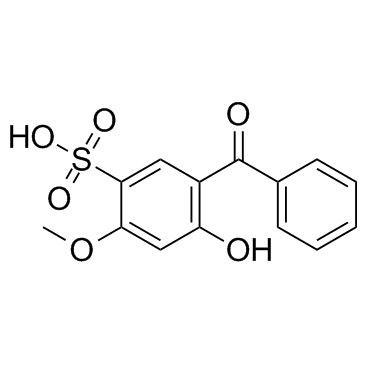Sunscreens block the induction of epidermal ornithine decarboxylase by ultraviolet-B radiation: a new way of evaluating sunscreen efficacy in vivo.
R W Gange, R Mendelson
Index: Br. J. Dermatol. 107(2) , 215-20, (1982)
Full Text: HTML
Abstract
Two proprietary sunscreen preparations containing para-aminobenzoic acid and sulisobenzone, respectively, were tested for their ability to block the induction of ornithine decarboxylase by medium wavelength ultraviolet radiation (UV-B) in the epidermis of the hairless mouse. Both preparations were effective, the sunscreen treated animals requiring more radiation for ornithine decarboxylase induction. The UV dose-dependent gradients were reduced by a mean factor of 7.35 (sulisobenzone) and 15 (PABA). These figures correlate well with other in vivo sunscreen assays. This new method provides a simple and reproducible way of evaluating sunscreens in vivo.
Related Compounds
| Structure | Name/CAS No. | Molecular Formula | Articles |
|---|---|---|---|
 |
Sulisobenzone
CAS:4065-45-6 |
C14H12O6S |
|
Altered UV absorbance and cytotoxicity of chlorinated sunscr...
2012-12-01 [Cutan. Ocul. Toxicol. 31(4) , 273-9, (2012)] |
|
iPSC-derived neurons from GBA1-associated Parkinson's diseas...
2014-01-01 [Nat. Commun. 5 , 4028, (2014)] |
|
Transcriptional expression of myelin basic protein in oligod...
2015-02-01 [Mol. Cell. Biol. 35(4) , 675-87, (2015)] |
|
The response of porcine monocyte derived macrophages and den...
2014-01-01 [BMC Vet. Res. 10 , 244, (2014)] |
|
Emerging pollutants in sewage, surface and drinking water in...
2012-03-01 [Chemosphere 86(10) , 1040-9, (2012)] |